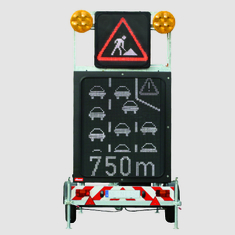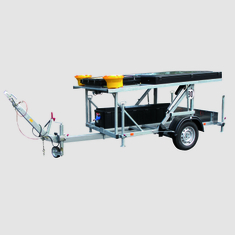Very special application of vehicle tracking by GPRS and GPS
In vehicle tracking GPS patch antennas are often in use. Sometimes it makes sense to think about other GPS antenna technologies that are not common. In the vehicle tracking application listed as below we selected a high gain GPS chip antenna. The selected GPS chip antenna gives you the same performance like a 18×18×4 mm GPS patch antenna. The only drawback of the GPS chip antenna is that it has no circular polarisation. The GPS satellites are transmitting with right hand polarisation. Reflections of GPS signals normally change the polarisation, and signals with wrong polarisation (left hand) will be attenuated by the GPS patch antenna. This effect we will miss by using GPS chip antennas. Anyhow, our special vehicle has always best view to the sky and no chance to receive a reflected GPS signal.
Nevertheless, if you open your smartphone you will find some kind of a GPS chip antenna as well. Your smartphone is working well and you miss nothing. Before we miss to tell, the missing circular polarisation gives you a loss of 3 dB. Who cares? By using high sensitive GPS modules you get back more than 3 dB. If you need the most sensitive than maybe it makes sense to combine the world sensitive GPS module with a GPS antenna that contains a balun to get it ground plane independent. Such helical non single ended and differential operating GPS antennas are interfering less with human body as well. Such GPS antennas are perfect for GPS tracking devices of soldiers, police officers or fire fighters.
And to top everything there are Glonass/GPS modules available that are able to receive 32 GNSS signals parallel. Yesterday I showed 17 Glonass/GPS signals receiving indoor by using a standard GPS patch antenna and two floors and a roof in view to the sky. With the new high gain differential operating GPS antenna we can offer the highest protection and security.
We would not like to hide that the mentioned Glonass/GPS module is able to receive the Chinese GNSS satellites called Compass, the European GNSS satellites called Galileo and the Japanese called QZSS. In Paris we received 21 Glonass/GPS signals during the open sky. If Europe will add Galileo to the sky, then receiving 32 channels will not be enough to catch them all.

